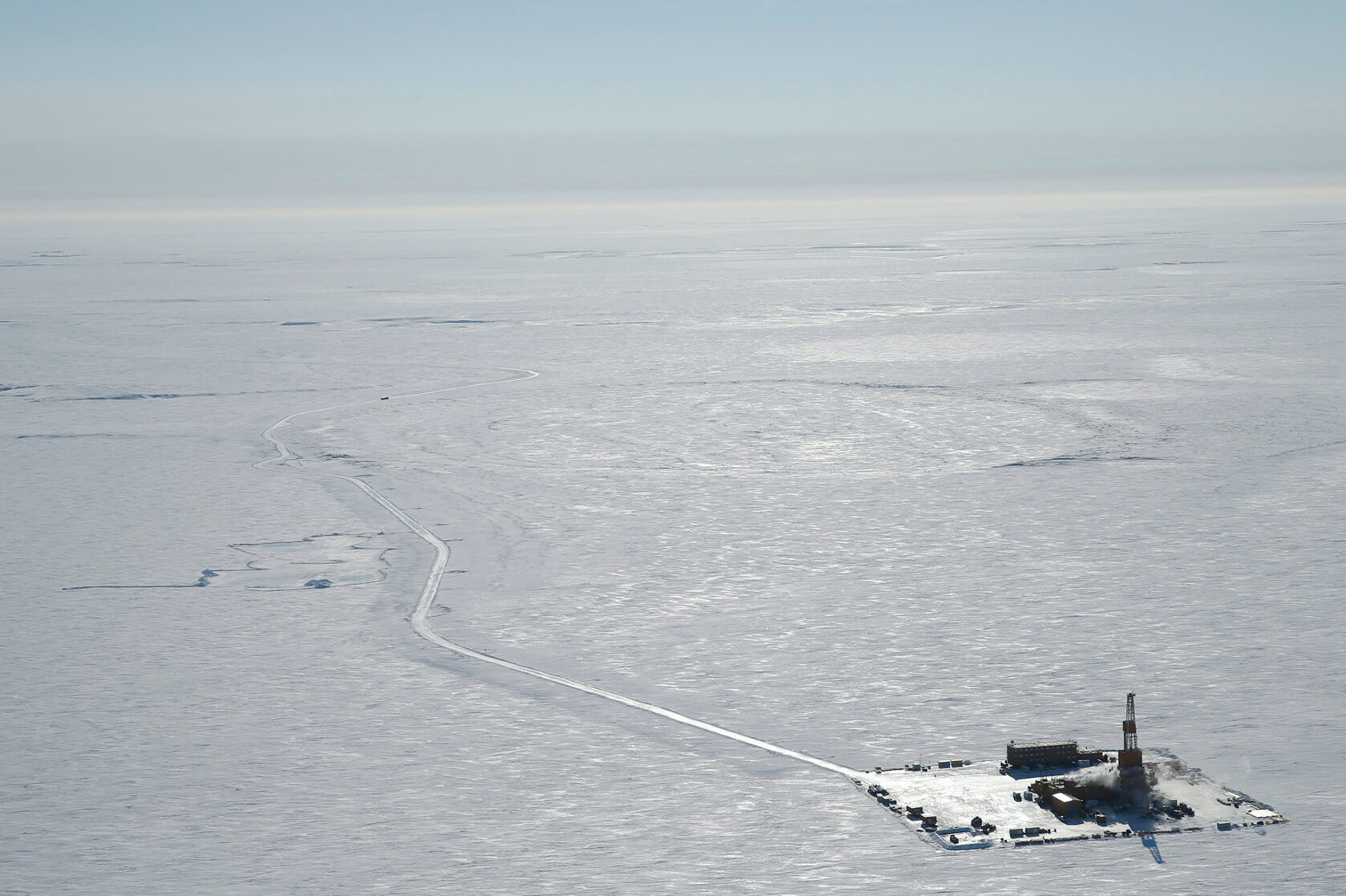
- Details
- By Brian Edwards
The Biden administration yesterday approved an $8 billion drilling project on Alaska’s oil-rich North Slope that has been vehemently opposed by environmentalists and some Native communities.
In approving the ConocoPhillips Willow oil project, the administration is greenlighting an enterprise that is expected to produce nearly 600 million barrels of petroleum over the next 30 years — enough to release 9.2 million metric tons carbon pollution each year, according to federal government estimates. The project has been called a “carbon bomb” by opponents.
The decision by the Bureau of Land Management came just one day after the Biden administration said it would bar or limit drilling in other areas of Alaska and the Arctic Ocean.
Environmentalists and some Alaska Native villages were outraged by the Biden administration’s decision to allow the project to move forward.
“Biden approved [Willow] knowing full well that it'll cause massive and irreversible destruction, which is just appalling, particularly coming from an administration who has pledged to address the climate crisis, has pledged to address environmental injustice, has pledged to address the extinction crisis,” said Kristen Monsell, a senior attorney at the Center for Biological Diversity, said in a statement.
In a statement, Sovereign Inupiat Living Arctic (SILA) called the decision a “great disappointment” that comes after years of grassroots, Inupiaq-led opposition, especially from the Nuiqsut Alaska Native Village, which SILA said will be most impacted by the project.
“The Bureau of Land Management acknowledges in the Record of Decision that if approved, [Willow] will have a disproportionate adverse effect on Nuiqsut’s health, subsistence and sociocultural systems,” SILA said in a statement. “We condemn the continued prioritization of profit over climate and people … We mourn the implications of worsening climate change within the Arctic and worldwide. We mourn for our animal relatives who cannot speak or ask for protection, for the water that will be forever polluted, and especially for those who have been taken from us by the cancer caused by these extractive industries.”
But the decision to approve the Willow project drew praise from Alaska’s bipartisan Congressional delegation and other Alaska Native communities who advocated for the project as a needed source of jobs in the region.
“We finally did it, Willow is finally reapproved, and we can almost literally feel Alaska’s future brightening because of it,” Republican Senator Lisa Murkowski said in a statement. “After years of relentless advocacy, we are now on the cusp of creating thousands of new jobs, generating billions of dollars in new revenues, improving quality of life on the North Slope and across our state.”
Democrat Mary Peltola (Yupik), Alaska’s lone member in the House of Representatives, hailed the decision and encouraged Alaskans “to make the best of this opportunity—that we use the revenues and jobs and economic opportunity from this project to make investments in the future of Alaska.”
In an apparent effort to temper criticism, the Biden administration emphasized it had worked to minimize the Willow project’s impact.
In a news release, the Department of Interior noted that it had “substantially reduced” the size of the project by denying two of the five proposed drill sites, adding that ConocoPhillips will relinquish rights to some existing leases in the National Petroleum Reserve-Alaska, including nearly 60,000 acres in the Teshekpuk Lake Special Area, a wetland ecosystem.
On Monday, Interior Secretary Deb Haaland posted a video on Twitter, calling the Willow project “a difficult and complex issue that was inherited” from the Trump administration.
“We focused on how to reduce the project’s footprint and minimize its impact to people and wildlife,” she said in the video.
“This was the right decision for Alaska and our nation,” Ryan Lance, ConocoPhillips chairman and chief executive officer, said in a statement. “Willow fits within the Biden Administration’s priorities on environmental and social justice, facilitating the energy transition and enhancing our energy security, all while creating good union jobs and providing benefits to Alaska Native communities.”
More Stories Like This
Klamath Indigenous Land Trust Purchases 10,000 Acres as Salmon ReturnTrump signs law that revokes some limits on drilling in Alaska’s National Petroleum Reserve
Southern Sierra Miwuk Nation Gets 900-Acres ofLand Back
Chilkat Indian Village Tells New Palmer Mine Owners They Are “Not Welcome” in Chilkat Valley
Tribes, Coastal Group Ask Army Corps to Revoke Permit for Texas Export Terminal
Help us defend tribal sovereignty.
At Native News Online, our mission is rooted in telling the stories that strengthen sovereignty and uplift Indigenous voices — not just at year’s end, but every single day.
Because of your generosity last year, we were able to keep our reporters on the ground in tribal communities, at national gatherings and in the halls of Congress — covering the issues that matter most to Indian Country: sovereignty, culture, education, health and economic opportunity.
That support sustained us through a tough year in 2025. Now, as we look to the year ahead, we need your help right now to ensure warrior journalism remains strong — reporting that defends tribal sovereignty, amplifies Native truth, and holds power accountable.
 The stakes couldn't be higher. Your support keeps Native voices heard, Native stories told and Native sovereignty defended.
The stakes couldn't be higher. Your support keeps Native voices heard, Native stories told and Native sovereignty defended.
Stand with Warrior Journalism today.
Levi Rickert (Potawatomi), Editor & Publisher

